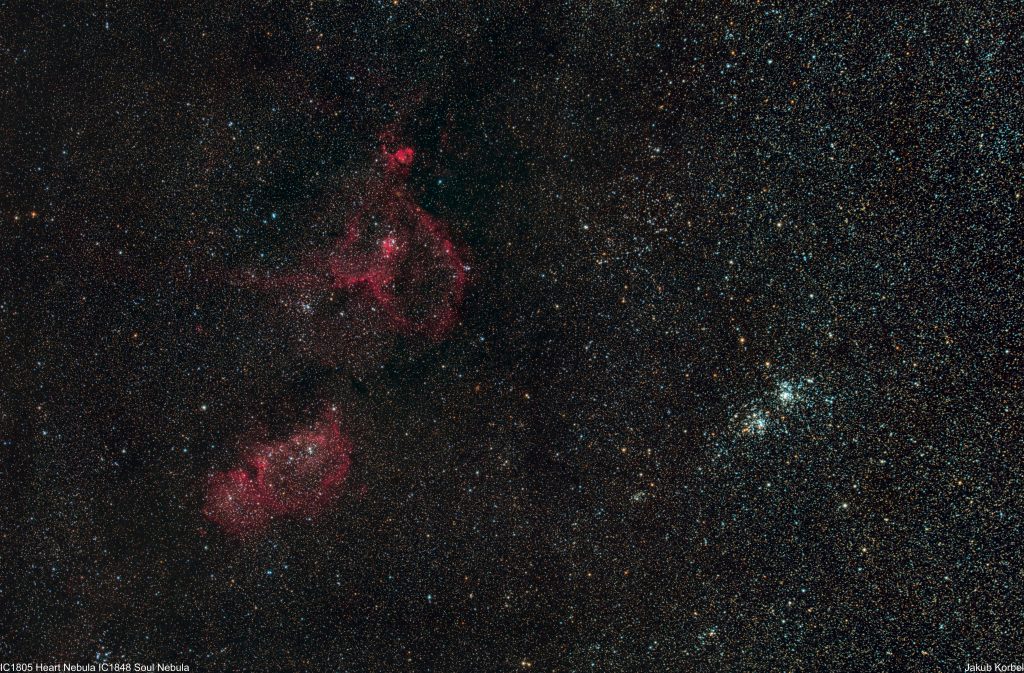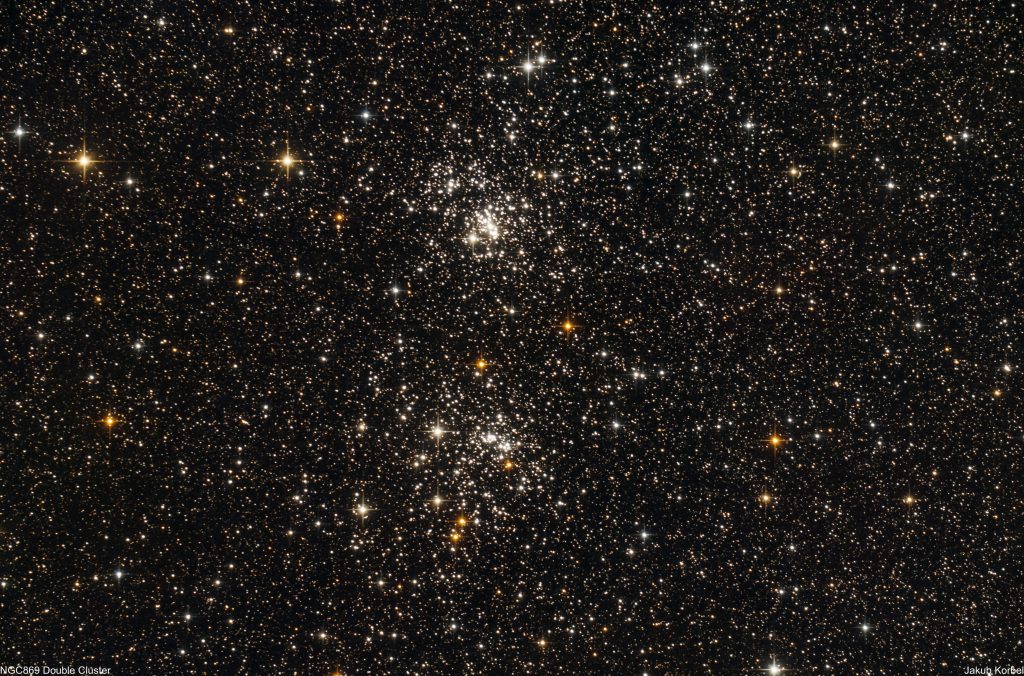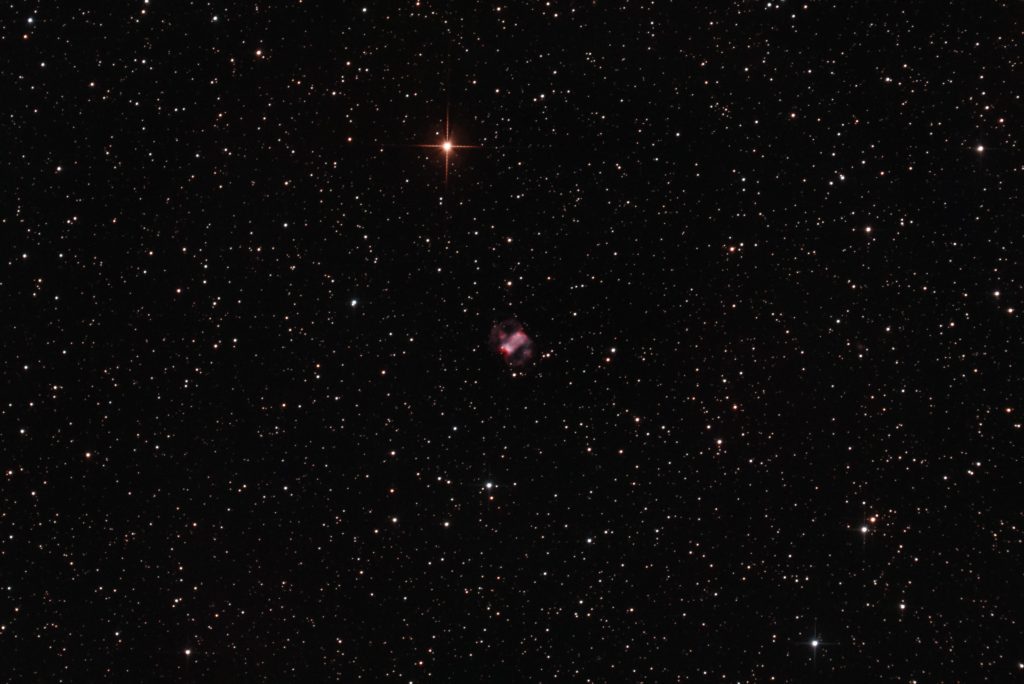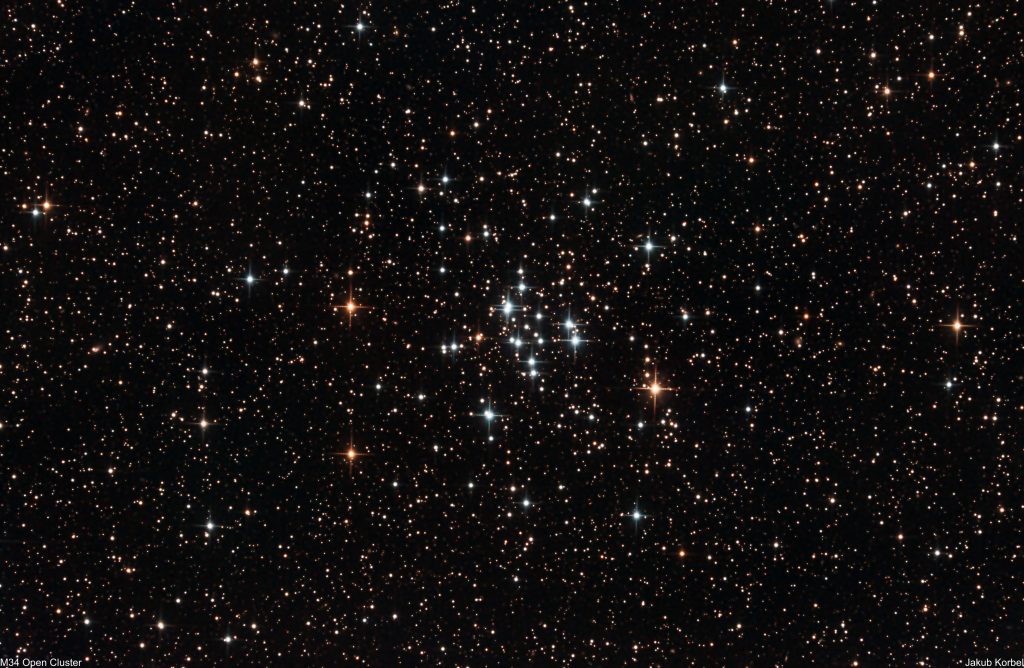California Nebula is a cloud of ionized hydrogen gas (HII region), which can be found in the constellation Perseus. The nebula is 1320 light-years away from Earth and it is 100 light-years long. Visual observation is very difficult, due to very low brightness. The first person who spotted this nebula was Edward Emerson Barnard in 1885. Since it is an emission nebula, it can be relatively easily photographed even under the light-polluted sky, with help of a narrowband filter.
I always wanted to capture this nebula, but the focal length must be relatively short. This is a perfect opportunity to test the William Optics RedCat. This time not with Canon EOS 6Da, but I attached a cooled astro camera ZWO ASI071 and placed the Optolong L-eXtreme dual-band filter.
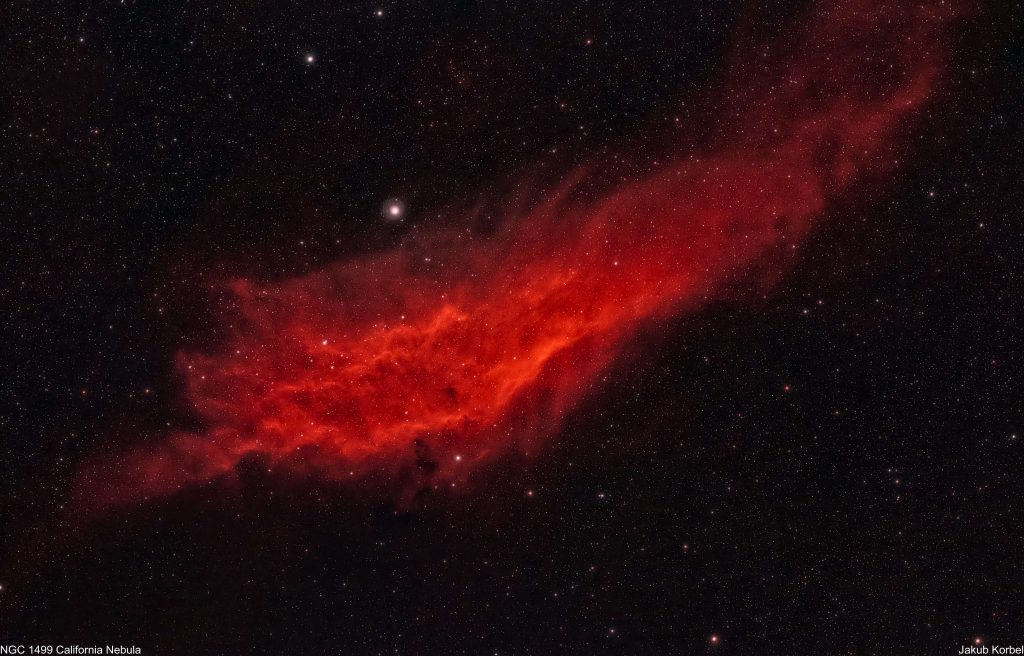
| Telescope | William Optics RedCat 51/250 f4.9 |
| Aperture | 51 mm |
| Focal length | 250 mm |
| Mount | Rainbow Astro RST 135 |
| Autoguiding | ZWO 178MM, QHY Mini Guide Scope 30/130 mm |
| Camera | ZWO 071 Pro @-10°C |
| Corrector | no |
| Filters | Optolong L-eXtreme 2" |
| Exposure | 105x180s, gain 95 |
| Date | 2022-01-23 |

